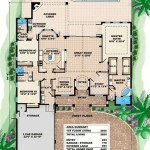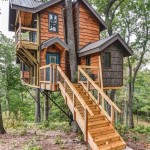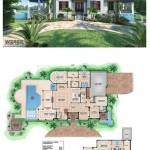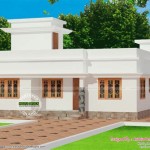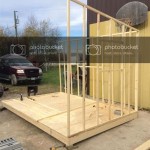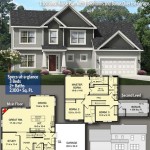Essential Aspects of House Plans Models
When it comes to building your dream home, choosing the right house plan is crucial. House plans serve as blueprints that guide the construction process and provide a visual representation of the finished home. Understanding the essential aspects of house plans models will help you make an informed decision based on your specific needs, preferences, and budget.
1. Types of House Plans
There are various types of house plans available, each with its unique design and features. Here are some common categories:
- Single-story homes: These offer convenience and accessibility on a single level, often with open floor plans and comfortable living spaces.
- Multi-story homes: These feature multiple levels, providing more vertical space for bedrooms, bathrooms, and living areas. They may include stairs, balconies, and lofts.
- Basement homes: These include a partially or fully underground basement level that can be used for storage, additional bedrooms, or recreation.
- Custom homes: These are designed specifically to meet the unique requirements and preferences of the homeowner, offering almost limitless possibilities for customization.
2. Floor Plan Layout
The floor plan layout determines the arrangement of rooms, hallways, and other living spaces within the home. Consider the following aspects:
- Flow and traffic patterns: Ensure that the layout allows for a smooth flow of movement throughout the home, reducing bottlenecks and creating convenient access to different areas.
- Room sizes and shapes: Determine the optimal size and shape of each room to accommodate furniture, activities, and storage needs.
- Natural light: Pay attention to the placement of windows to maximize natural lighting in all rooms, creating a bright and inviting atmosphere.
- Privacy and separation: Consider the need for private spaces, such as bedrooms and bathrooms, and plan for separation between public and private areas.
3. Exterior Design and Style
The exterior design and style of your home impact its overall aesthetic appeal and curb appeal. Choose from a range of architectural styles, such as:
- Traditional: Features classic elements like gabled roofs, brick or stone exteriors, and symmetrical designs.
- Contemporary: Offers clean lines, geometric shapes, large windows, and open floor plans.
- Cottage: Inspired by cozy cottages, showcasing charming exteriors, dormer windows, and picket fences.
- Mediterranean: Brings elements of Spanish and Italian homes with tiled roofs, arched windows, and stucco exteriors.
4. Building Materials and Construction
The choice of building materials and construction methods affects the durability, energy efficiency, and overall cost of the home. Consider the following:
- Foundation: Choose between slab-on-grade, crawl space, or basement foundations depending on the site conditions and structural requirements.
- Framing: Options range from traditional wood framing to steel or concrete framing, each offering different levels of strength, insulation, and longevity.
- Roofing: Select from materials like asphalt shingles, metal, tile, or slate, considering durability, energy efficiency, and aesthetic appeal.
- Exterior siding: Choose from materials like vinyl, brick, stone, or fiber cement, balancing durability, maintenance requirements, and design aesthetics.
5. Energy Efficiency and Sustainability
Incorporating energy-efficient and sustainable features into your house plan can reduce operating costs and environmental impact. Consider the following:
- Insulation: Proper insulation in walls, floors, and ceilings helps maintain a comfortable indoor temperature, reducing heating and cooling costs.
- Windows and doors: Energy-efficient windows and doors with double or triple glazing and low-emissivity coatings minimize heat loss and gain.
- Renewable energy: Integrate solar panels or other renewable energy sources to generate electricity and reduce reliance on fossil fuels.
- Water conservation: Install water-efficient appliances, low-flow fixtures, and rainwater collection systems to minimize water usage.
6. Budget and Financing
It's essential to consider the cost of building your home and secure appropriate financing before selecting a house plan. Factors affecting cost include:
- Size and complexity of the plan: Larger homes and more complex designs will generally cost more to build.
- Materials and construction methods: High-quality materials and specialized construction techniques can increase the cost.
- Location and labor costs: Building costs vary depending on the region and availability of labor.
- Permits and inspections: Factor in the cost of obtaining necessary building permits and inspections.
Conclusion
Understanding the essential aspects of house plans models empowers you to make informed decisions about the design, layout, and features of your dream home. Consider your specific needs, preferences, and budget to choose a plan that aligns with your vision and lifestyle. By carefully reviewing floor plans, exterior designs, building materials, energy efficiency, and financial considerations, you can create a home that fulfills your expectations and provides lasting value.

House Floor Plan 2 3d Model Cgtrader

Where You Can Buy House Plans Live Home 3d

3d Floor Plans

Contemporary Model House Plans Jai Constructions Kerala Home

25 More 3 Bedroom 3d Floor Plans

50 Fascinating Home Plan Exteriors Ideas House Plans Model Modern

Models Detail House Plans One Story Homes Floor

3 Bedroom House Plans Home Designs Nethouseplansnethouseplans

Sweet Home 3d Draw Floor Plans And Arrange Furniture Freely

Simple 3 Bedroom House Plans Free Floor With Models Nethouseplans 06 Nethouseplansnethouseplans

